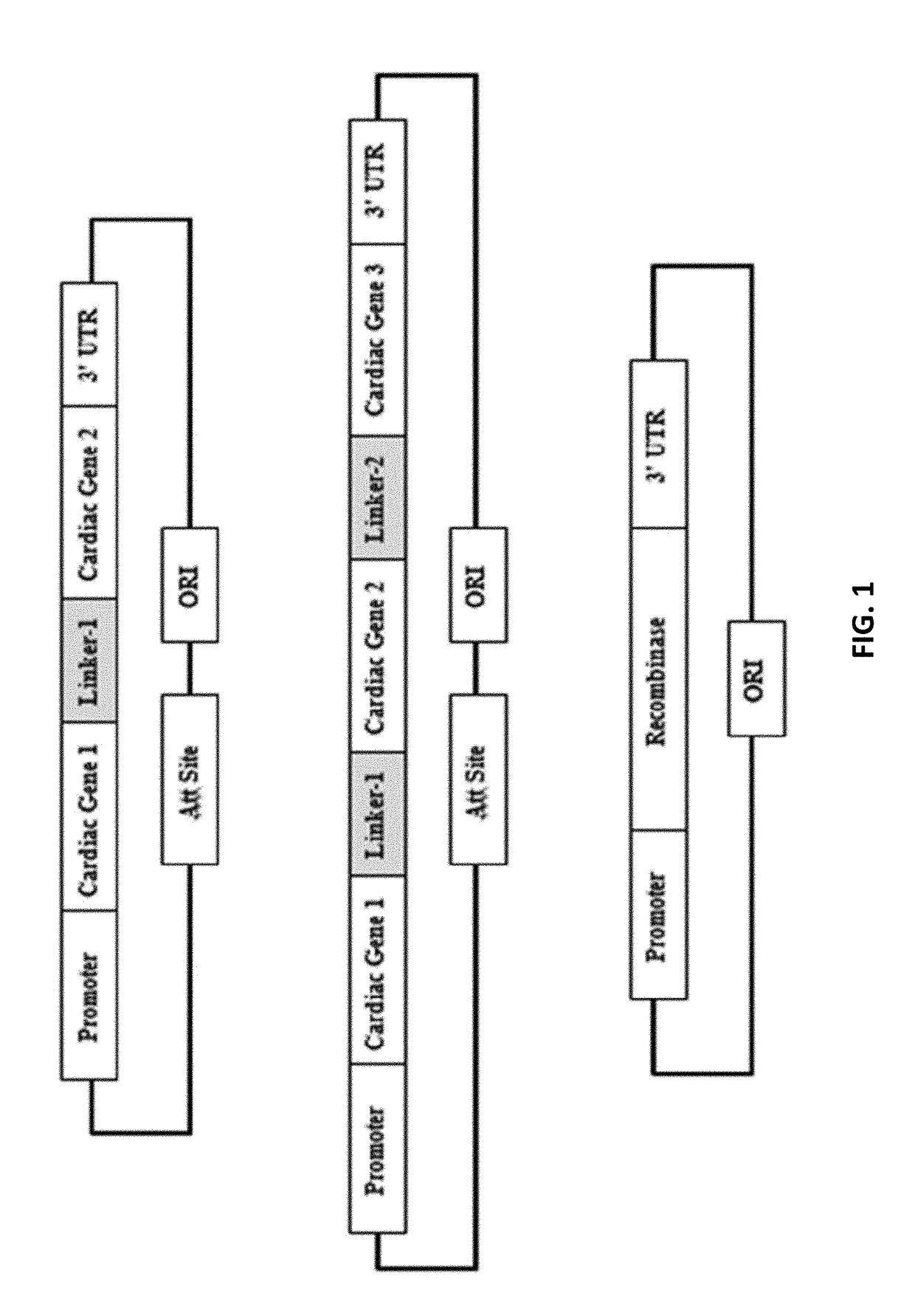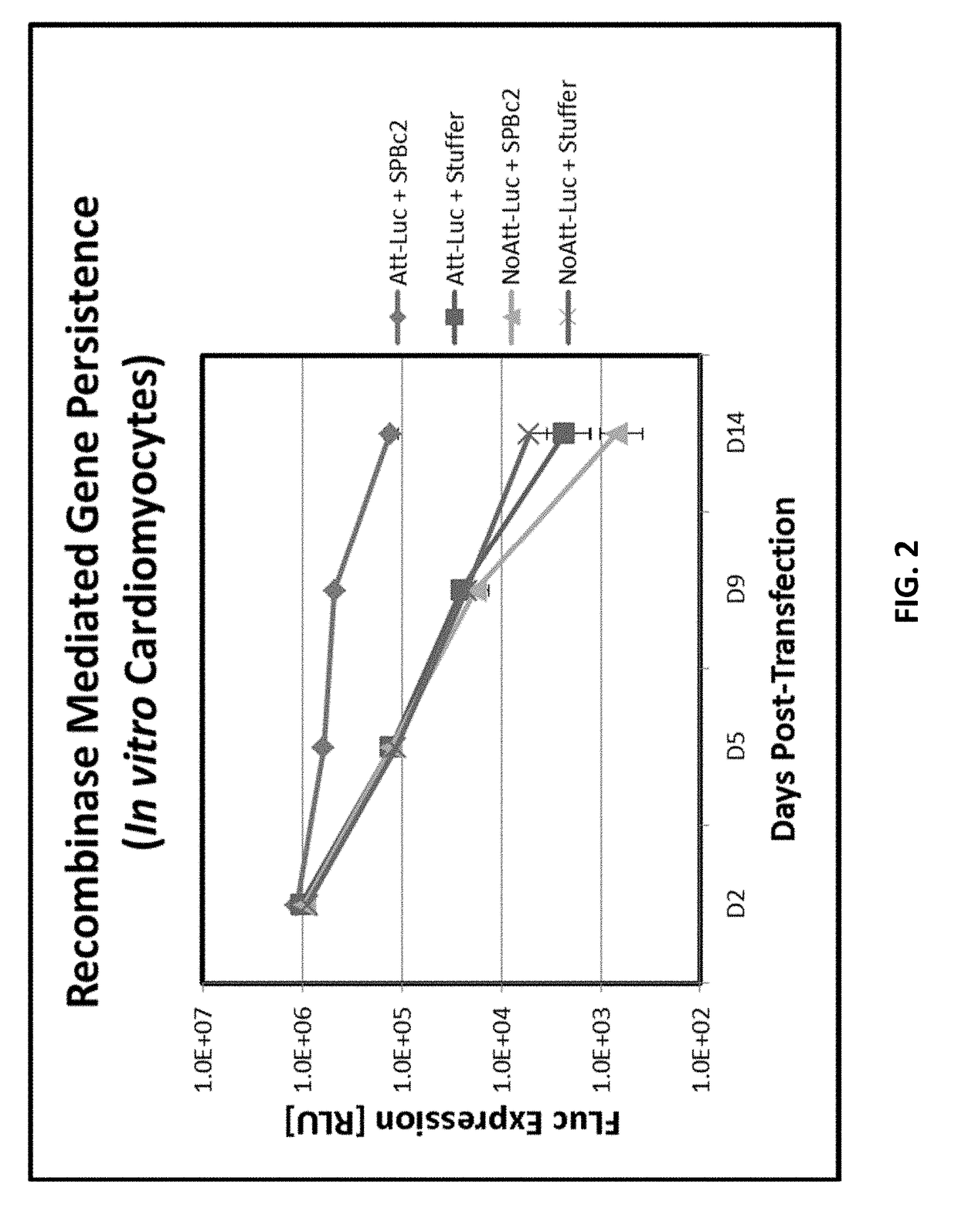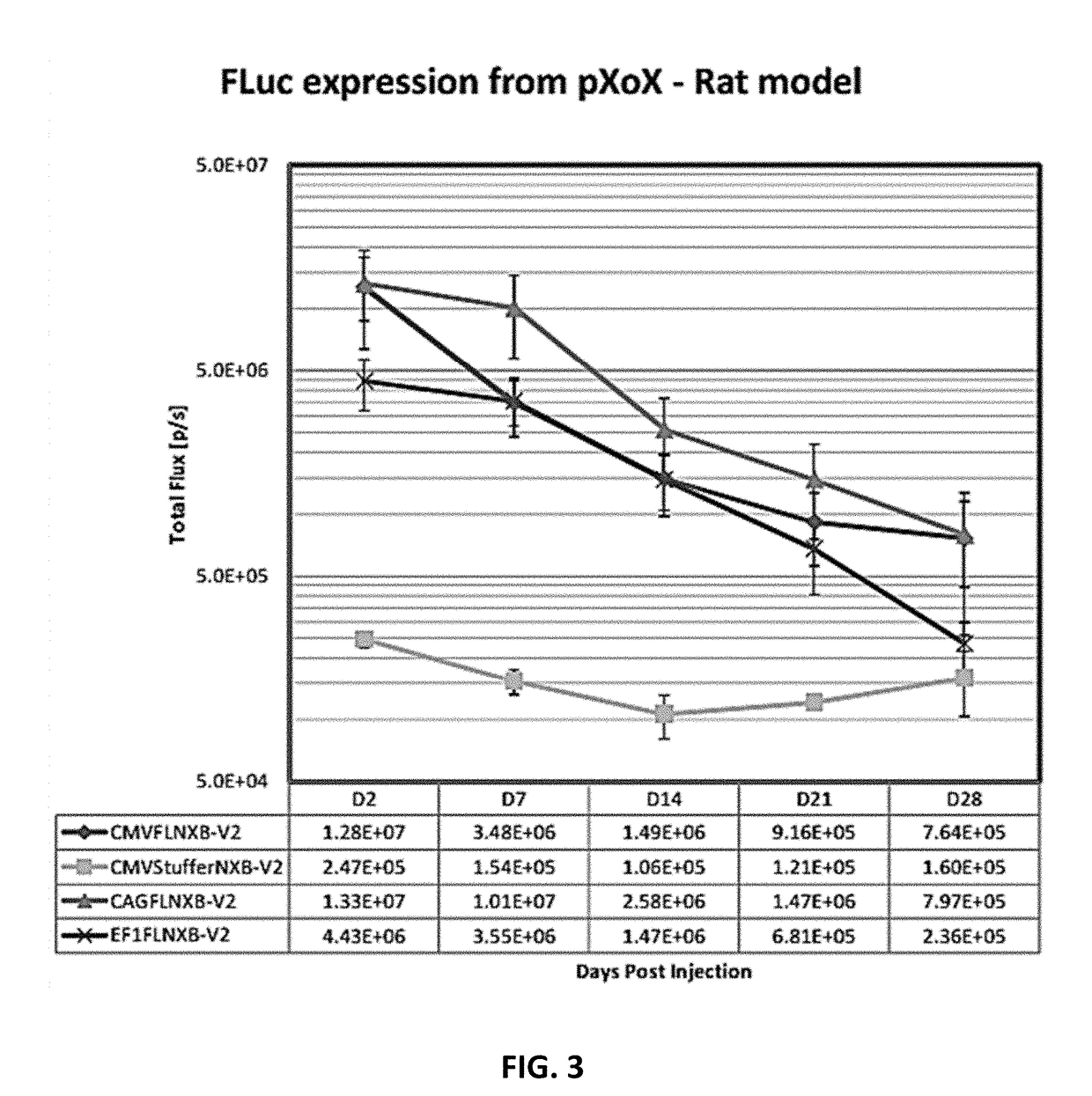Compositions and methods for expression of multiple biologically active polypeptides from a single vector for treatment of cardiac conditions and other pathologies
- Summary
- Abstract
- Description
- Claims
- Application Information
AI Technical Summary
Benefits of technology
Problems solved by technology
Method used
Image
Examples
example 1
Transfection of Cardiomyocytes for Att Site Mediated Recombination
[0361]Cardiomyocytes were transfected with luciferase vectors with or without (i.e., plus (+) or minus (−)) att-site, and plus (+) or minus (−) SpBC2 recombinase. Luciferase expression was then monitored over time to assess att-site mediated recombination. To determine site specificity and efficacy of SpBC2 and its proposed site of activity (Att-site), cardiomyocytes were co-transfected with a SpBC2 plasmid and a Firefly luciferase (“FLUC” or “Luc”) plasmid vector containing att-site around the gene of interest. Controls included were Att-Luc plasmid without SpBC2 (to measure random integration), No-Att-Luc plasmid with SpBC2 (to measure non-att-site specific integration), and No-Att-Luc plasmid without SpBC2 (to measure transient expression). Cells were transfected via DNAfectin (Applied Biological Materials Inc., Richmond, BC, Canada) and cultured over 14 days, periodically sub-culturing cells, testing cells by luci...
example 2
HUVEC Proliferation Assay
[0366]A Human Umbilical Vein Endothelial Cell (HUVEC) proliferation assay was used to assess the functionality of VEGF165 expressed by pXoX. Serum-starved HUVECs were treated with conditioned media from patients (dilated, hypertrophic), or healthy iPSC-derived cardiomyocytes transfected with pXoX or a single effector control (pVEGF165 positive control, pSDF-1α negative control). After 96 hours of incubation, HUVEC proliferation was quantitated using a luminescence assay. Assay were repeated three times (e.g., CM-1, CM-2, CM-3).
Induced Pluripotent Stem Cells
[0367]iPSC cardiomyocyte cells were transfected with singe gene, dual-gene, or triple-gene vectors encoding for S100A1 and VEGF; S100A1, SDF1, and VEGF; or VEGF alone. 48 hours post transfection cellular supernatant was collected. HUVECs were seeded on 6-well plates at a density of approximately 1:10, 1:100, and 1:1000 in the supernatant collected from the transfected iPSC cells. 96 hours following introdu...
example 3
Endothelial Tube Formation Assay
[0370]The Endothelial Tube Formation Assay (CBA200, Cell Biolabs Inc., San Diego, Calif., USA) will be used in addition to the HUVEC proliferation assay. ECM gel will be thawed at 4° C. and mixed to homogeneity using cooled pipette tips. Cell culture plates (96-well) were bottom-coated with a thin layer of ECM gel (50 μl / well), which will be left to polymerize at 37° C. for 60 min. HUVEC (2-3×104 cells) will be seeded into the cell culture plate in supernatant collected from iPSC cardiomyocyte cells that were transfected with singe gene, dual-gene, or triple-gene vectors encoding for S100A1 and VEGF connected by a linker described herein; S100A1, SDF1, and VEGF connected by a linker described herein; or VEGF alone. 150 μl of the supernatant-HUVEC mixture will be added to each well on the solidified ECM gel. The plates will be incubated at 37° C. for 12-18 hr. and the endothelial tubes will be quantified using a fluorescent microscope after staining wi...
PUM
| Property | Measurement | Unit |
|---|---|---|
| Fraction | aaaaa | aaaaa |
| Current | aaaaa | aaaaa |
| Fraction | aaaaa | aaaaa |
Abstract
Description
Claims
Application Information
 Login to View More
Login to View More - R&D
- Intellectual Property
- Life Sciences
- Materials
- Tech Scout
- Unparalleled Data Quality
- Higher Quality Content
- 60% Fewer Hallucinations
Browse by: Latest US Patents, China's latest patents, Technical Efficacy Thesaurus, Application Domain, Technology Topic, Popular Technical Reports.
© 2025 PatSnap. All rights reserved.Legal|Privacy policy|Modern Slavery Act Transparency Statement|Sitemap|About US| Contact US: help@patsnap.com



